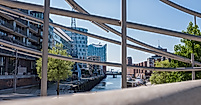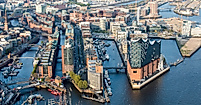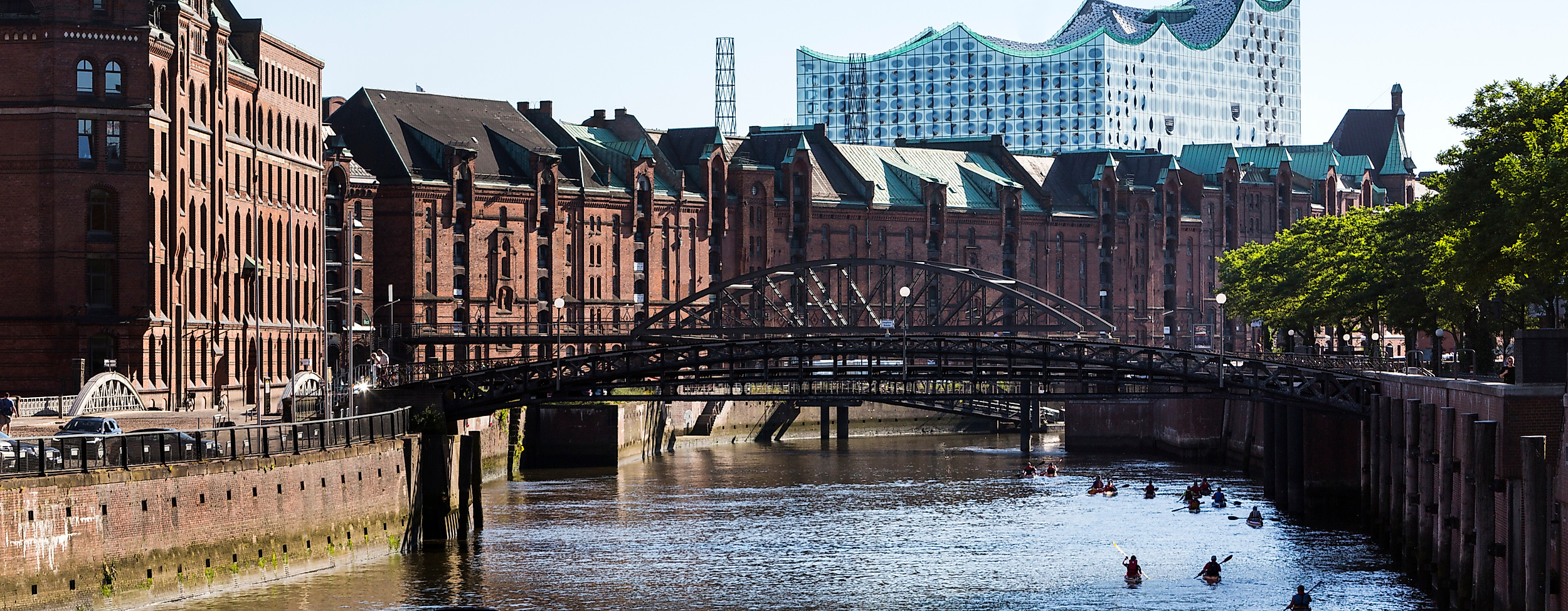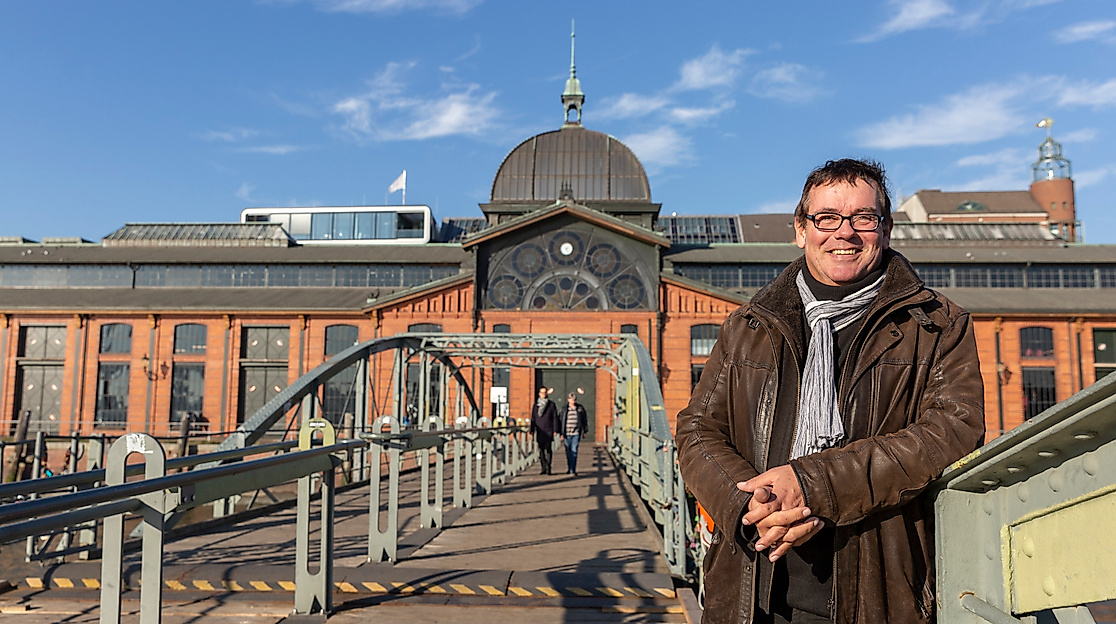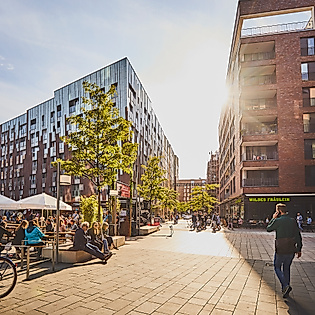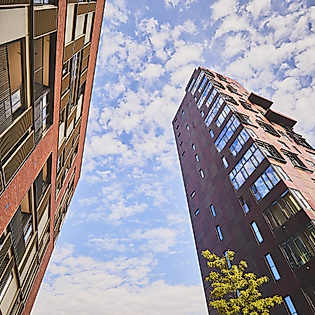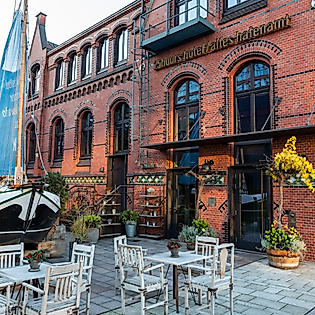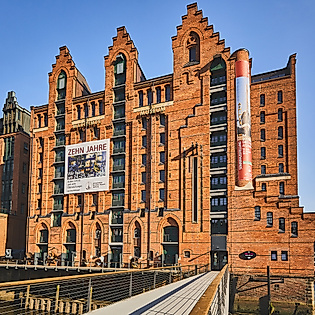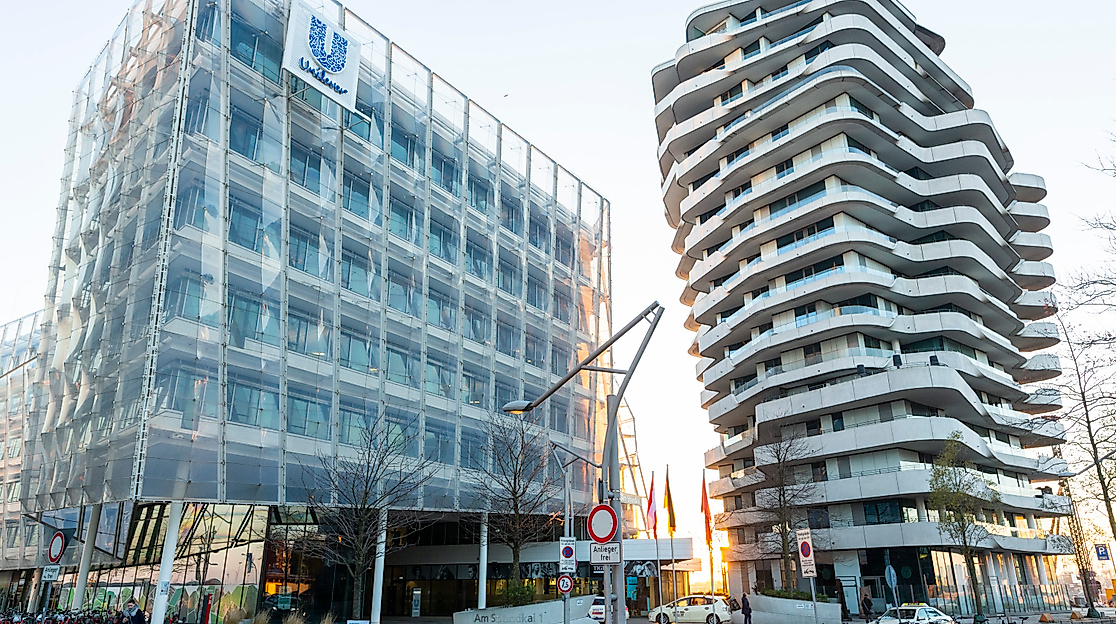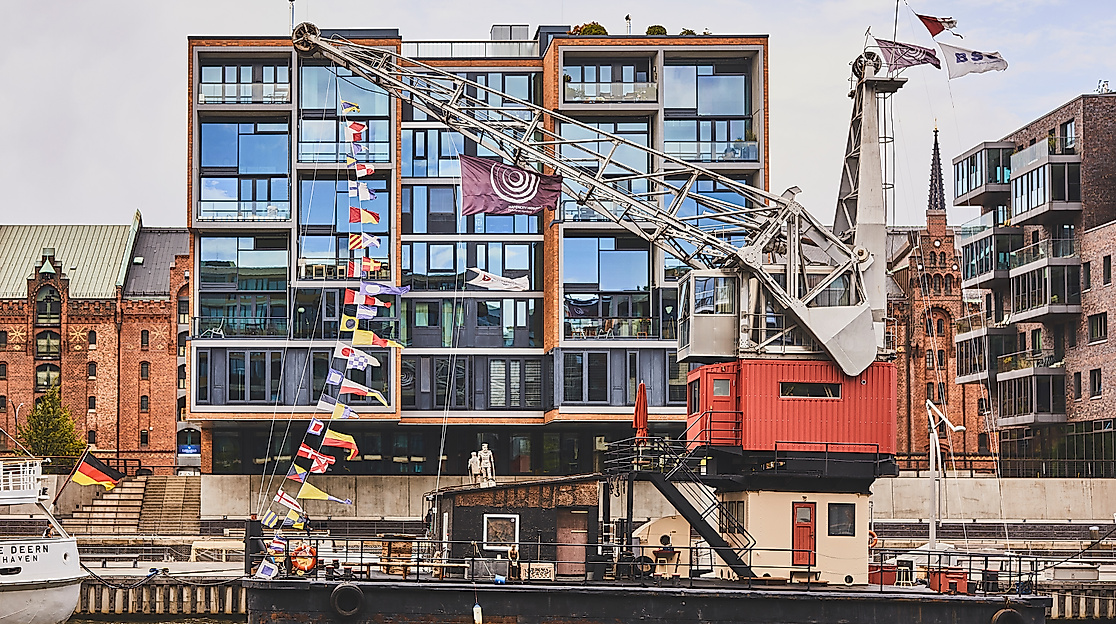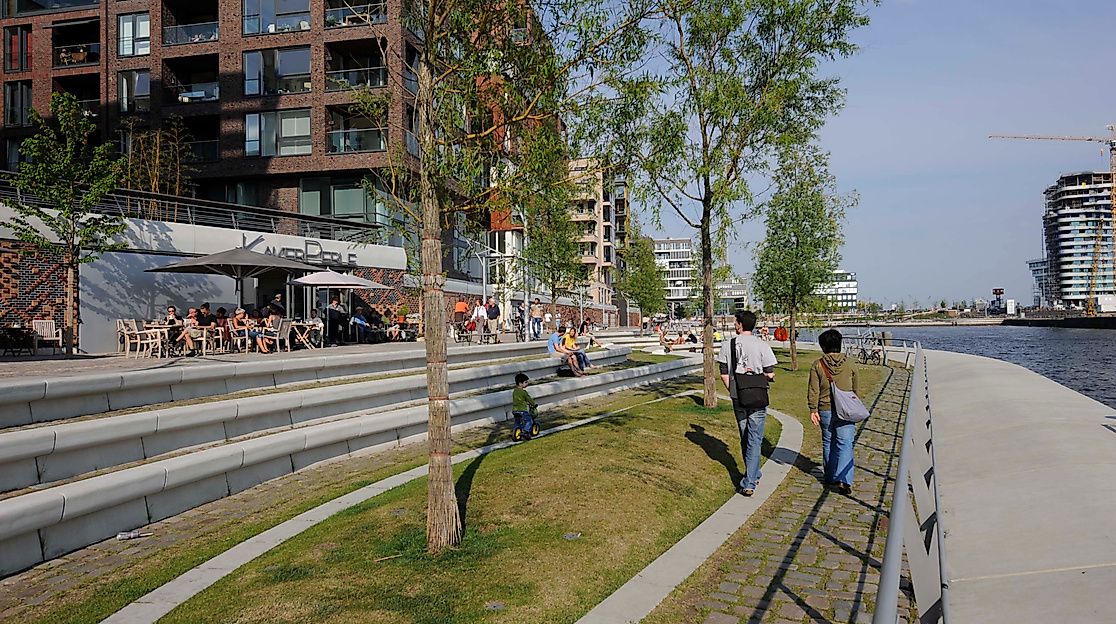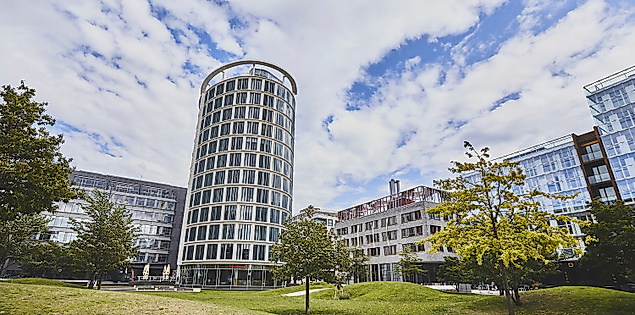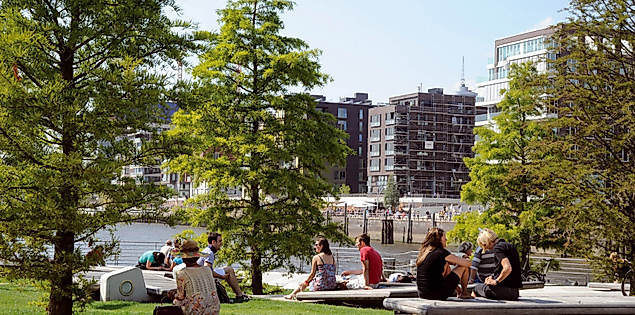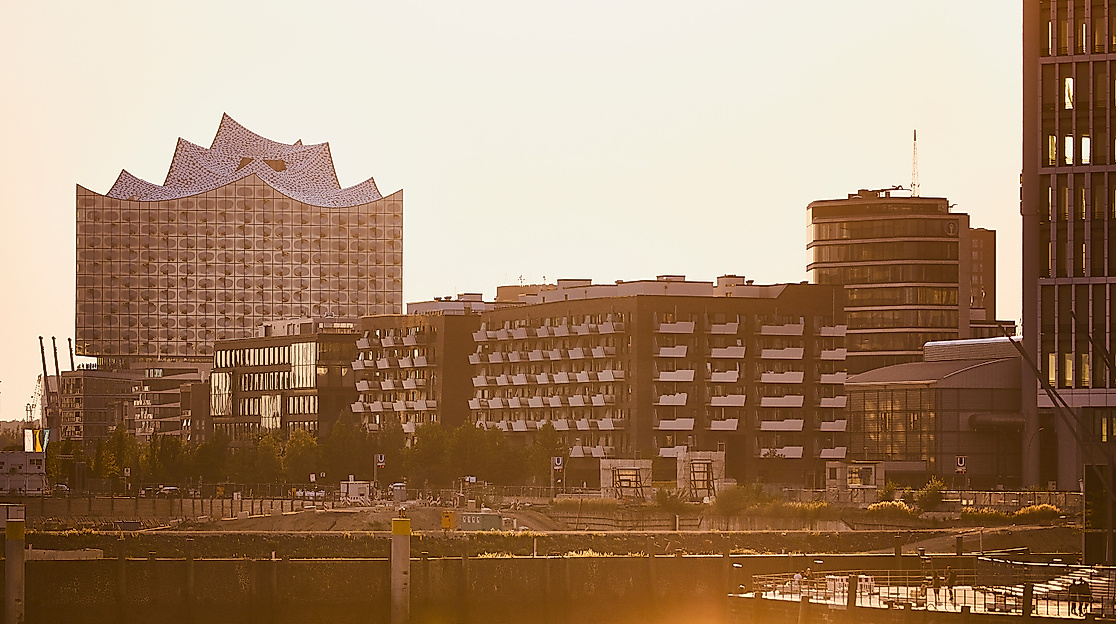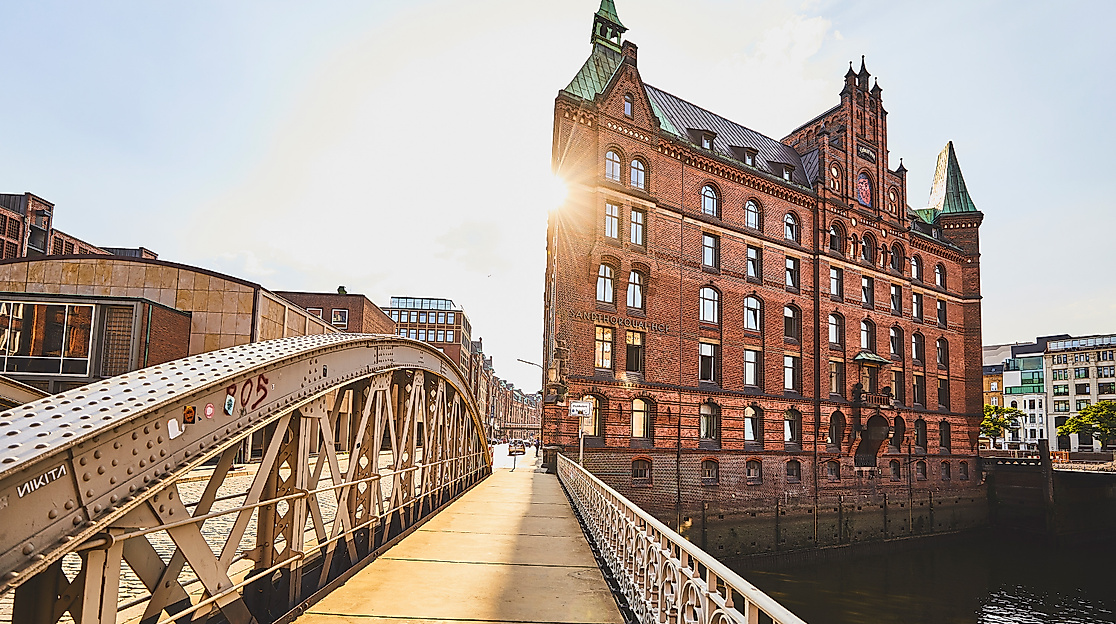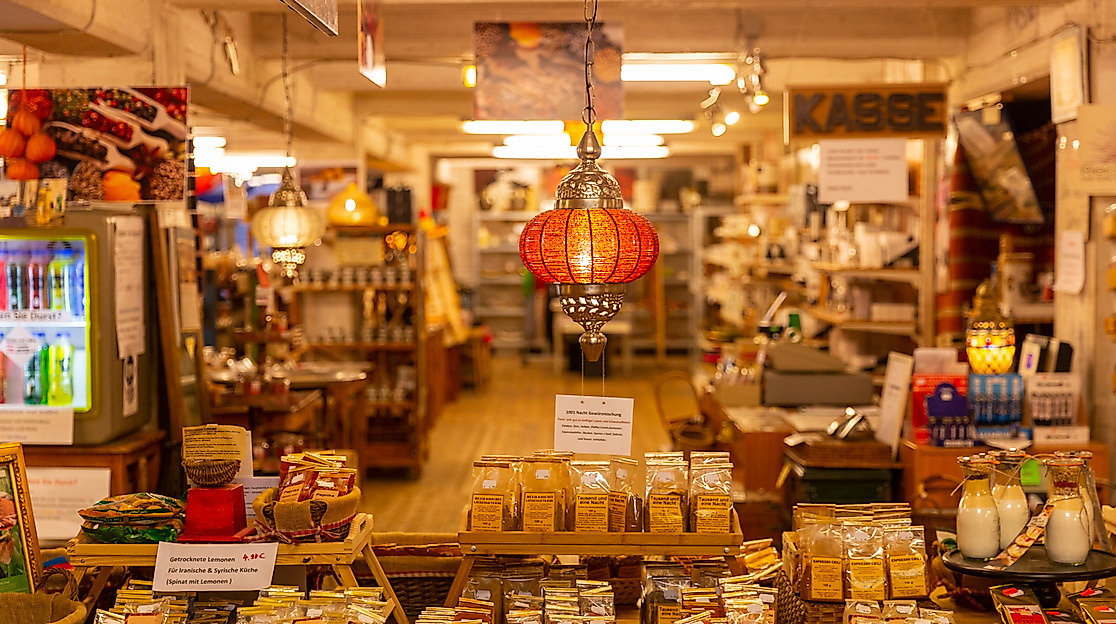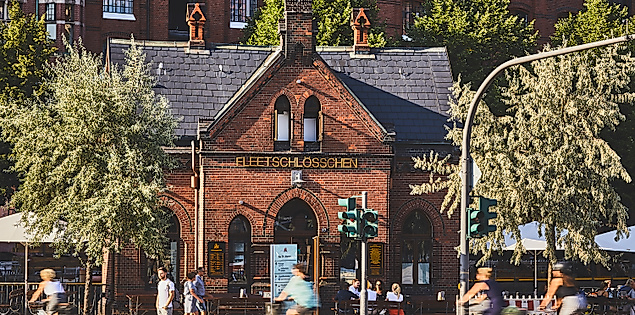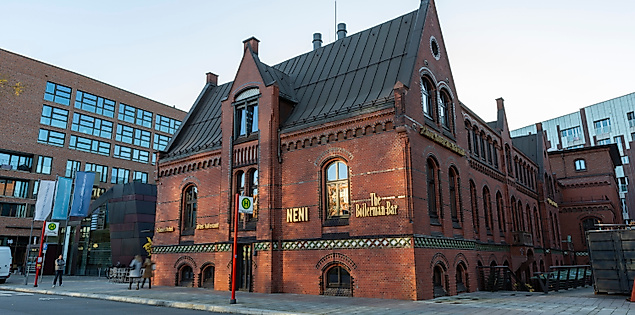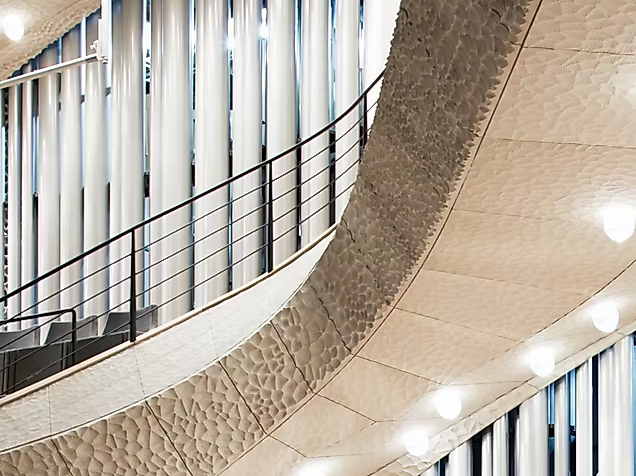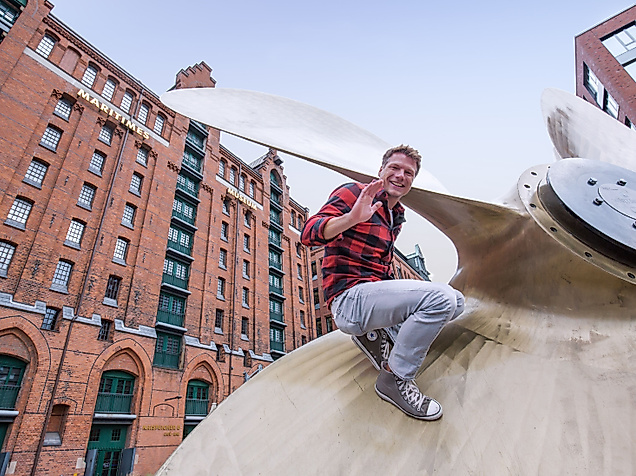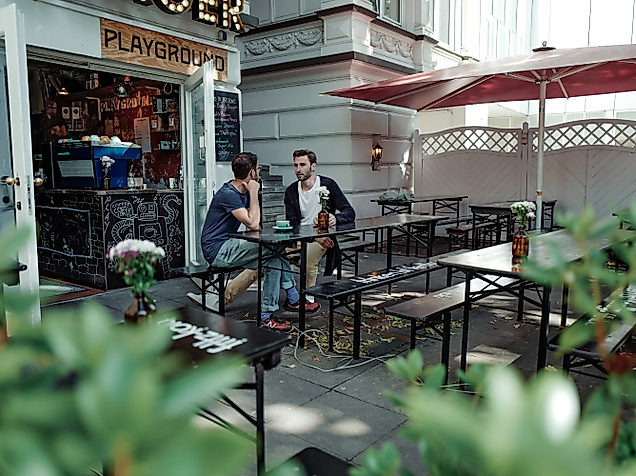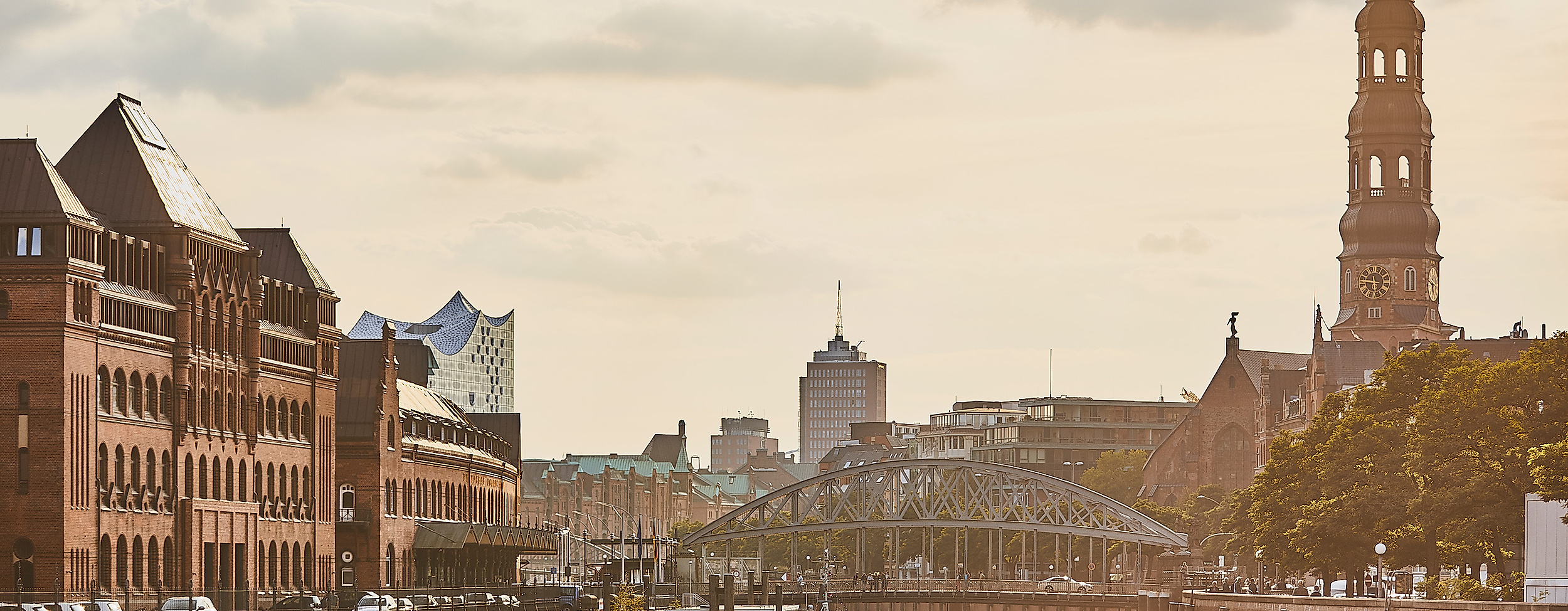
On the go with Götz Weisener
Moin, my name is Götz Weisener. The new heart of the Hanseatic city is growing at a breath-taking pace in Hamburg’s HafenCity. A city within a city which was still Europe’s largest construction site just a few years ago. Today, the Elbe philharmonic's roof shimmers like a jewel over the neighbourhood, whose character could not be more contrasting. On the edge of the inner city rest the old office buildings (Kontorhäuser) of the brick-red Speicherstadt (lit. warehouse city). On the other side, towards the banks of the Elbe, one can see the modern, playful architecture of the new harbour district with its mix of office high-rises and residential buildings, galleries and boutiques, terrace cafés and new parks. You can enjoy the view of the harbour from nearly everywhere, where week in, week out bodacious cruise ships berth. My name is Götz Weisener, and I work as a coordinator in the trade syndicate Netzwerk in HafenCity. I would like to invite you to join me through this new borough of Hamburg.
Model ships, street art and design
Let’s start our tour on the Überseeboulevard, the strolling promenade in HafenCity. Here, you will not only find shops and cafés, but you will also discover art at every turn. For instance along the open-art exhibition, in which changing artists show their large-size works. Behind it, the beautiful brick facade of the old harbour master’s office (Osakallee 12) catches your eye. In the restored, oldest building of the historic Speicherstadt, you can find the design hotel 25hours and the Neni restaurant, which offers Middle Eastern and Mediterranean cuisine. From Überseequartier, the centre of HafenCity, I cross the Magdeburg harbour via the Busanbridge. On the left, you can see the imposing brick building of the International Maritime Museum (Koreastraße 1) with a huge collection of model ships. To the right, the Elbtorpromenade stretches with terrace cafés, restaurants and galleries. The (Hongkongstraße 6) is particularly interesting. Here, you can discover outstanding works from all sorts of design areas.
Historic ships and architectural houses
For lunch, I go to Alte Liebe (Koreastraße 1), a rustically furnished restaurant with fish specialities. Now and then, you can also find the traditional Hamburg dish Labskaus (potato recipe with corned beef and rolled pickled herring, fried egg and gherkin) on the menu here. Afterwards, I walk back over the Busanbridge towards Dalmannkai, where I stop at three galleries. Hafenliebe (Dalmannkai 4) shows monthly-changing exhibitions and Nissis Kunstkantine (Dalmannkai 6) combines art and culinary events. The works exhibited in the nearby Forum Stadt Land Kunst and the glass gallery Stölting (Am Sandtorpark 12 and 14) are also worth visiting. The Dalmannkai ends at Große Grasbrook, which connects the Speicherstadt with the Elbe and the cruise ship terminal - and is easily recognisable by the ensemble Marco Polo Tower and the Unilever building.
Between the modern and the past
In warm weather, you can relax on the Marco Polo and Magellan terraces. Walking on the pontoon at the Sandtorhafen, you will come across restored cranes and historic ships, with the modern architectural houses Spalier in the background. I feel like having a good cup of tea, so I go to Meßmer Momentum (Am Kaiserkai 10), where you can also partake in tea tastings and readings. On the go, I frequently meet groups who are guided by foot, e-scooter or bicycle through HafenCity (hafencity.com) - from the Kehrwiederspitze in the west to the "wild east" with the Oberhafenquartier (Stockmeyerstraße), the young creative district with space for art and music, small manufacturers and agencies.
From the Elphi to the Fleetschlösschen
The great thing about the HafenCity is that you only have to walk a few steps and turn your head a few degrees to discover new perspectives and sights. From the Kaiserkai, you get a wonderful view of the Elbphilharmonie (Platz der Deutschen Einheit 1), the new landmark of Hamburg, which we abbreviatedly call Elphi. The 1,100 glass elements of the facade reflect the light of the setting sun, and the port behind it begins to turn auburn. Anyone now standing on the 37-metre-high viewing platform (Plaza had more than 4 million visitors in 2017), can see Hamburg’s romantic side. The bricks of the Speicherstadt (UNESCO World Heritage Site), which is connected to the old town by bridges over the canals (Elbkanäle), blaze in warm colours. In addition to tourist highlights, such as the Spice Museum (Am Sandtorkai 34), the Hamburg Dungeon (Kehrwieder 2) and the Miniatur Wunderland (Kehrwieder 2-4), it is home to carpet, coffee and tea traders.
Did you know?
The Elbphilharmonie is home to Germany's longest escalator. A ride takes about two and a half minutes.
Want some refreshments? The perfect end of the day
If you want to eat in the ambience of a former customs house, you will enjoy culinary delicacies such as fish soup at Fleetschlösschen (Brooktorkai 17). If you rather want to keep it casual, you will find good wok and sushi dishes in Chilli Club (Am Sandtorkai 54). I prefer the versatile menu in the restaurant of hotel 25hours (Überseeallee 5). Not far from it, you can round off the long day in HafenCity with a cocktail from (Osakaallee 12).


